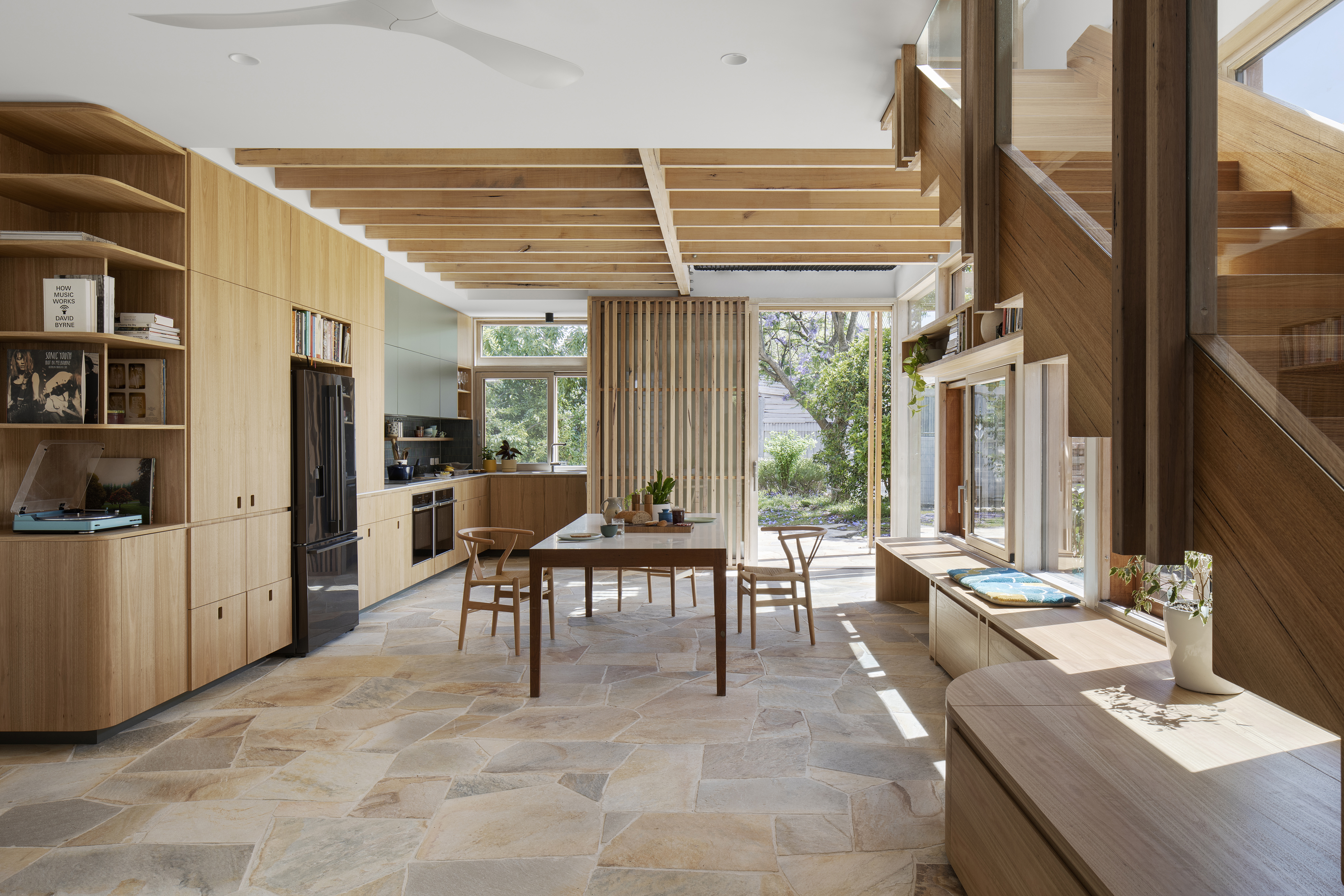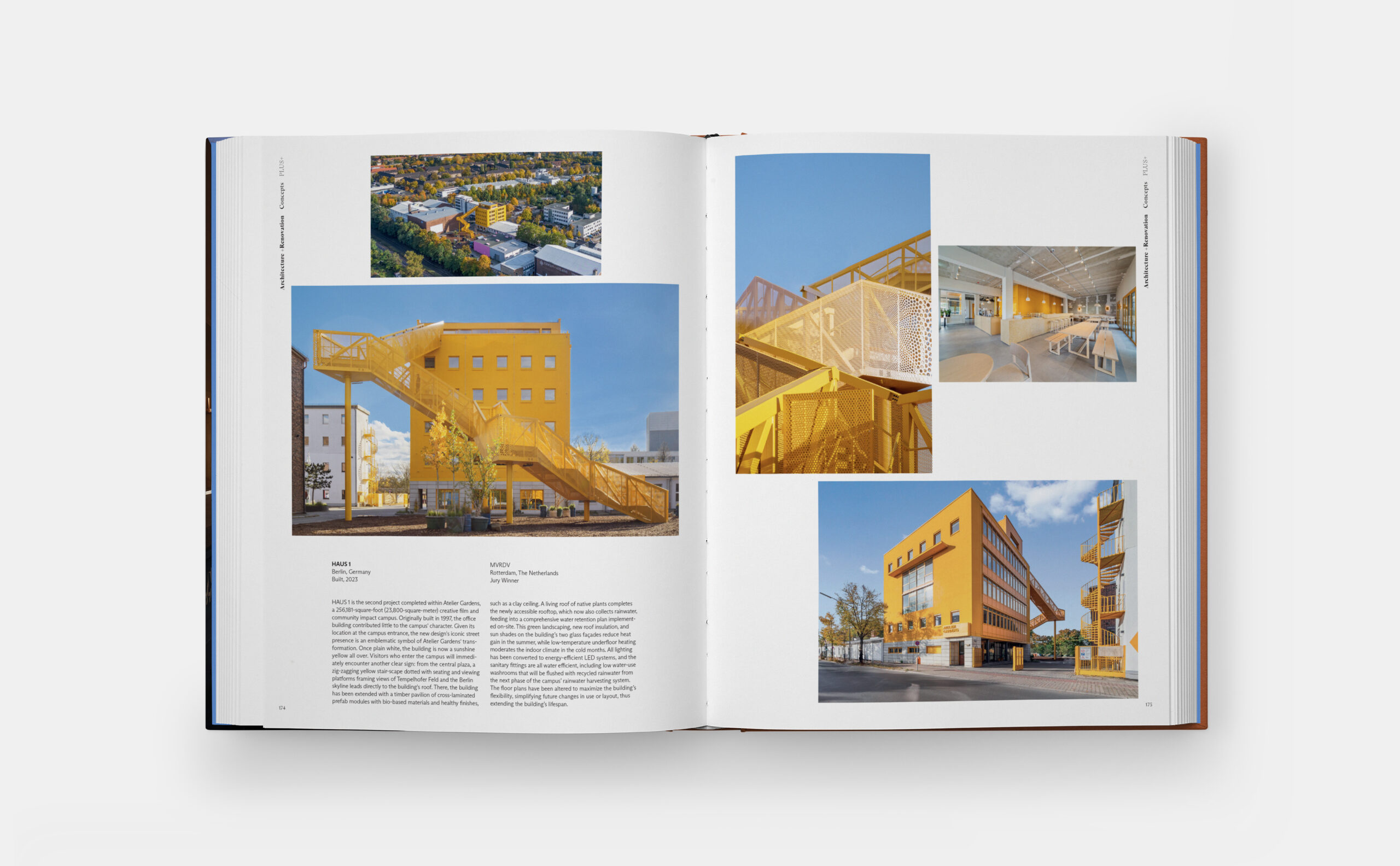What Is Contemporary Architecture’s Place in University Curricula?
The latest edition of “Architizer: The World’s Best Architecture” — a stunning, hardbound book celebrating the most inspiring contemporary architecture from around the globe — is now available. Order your copy today.
From long studio hours to traumatic crit sessions and sleepless nights, both the good and the bad memories from architecture school stick with us for life. Personal feelings aside, architecture school is where we learn the fundamentals and begin figuring out how to navigate the industry.
That said, while school is great for teaching problem-solving, design thinking and architectural history, the most common complaint from architects starting their careers is the lack of practical skills and understanding of the business side of the profession.
This gap is well-known, but there’s another equally important one that often gets overlooked: the lack of knowledge about contemporary architecture. In fact, many students leave school with a strong grasp of architectural history but remain disconnected from the current trends, innovations and challenges shaping the profession today.
But is this really such a huge problem? And with that in mind, should understanding contemporary architecture be a bigger part of the curriculum? The answer is: without a doubt — here’s why:
The Bigger Picture: Beyond Le Corbusier and Mies van der Rohe
Architecture school does an excellent job of teaching history and theory — two subjects that are absolutely crucial for understanding the core principles of design. Too often, however, students find themselves romanticizing the works of Le Corbusier and Mies van der Rohe while struggling to name a favorite contemporary architect. And while there’s no denying the importance of these iconic figures (they laid the groundwork for so much of what we do today after all) this tendency to glorify the past can leave students disconnected from what’s being built right now.
While students do engage with contemporary architecture through specific studio projects or case studies, there’s rarely a structured, comprehensive focus on it in the same way that architectural history is taught. Contemporary architecture often appears in isolated examples rather than as part of a broader conversation about today’s global challenges. As a result, students are left without a cohesive understanding of the projects and innovations shaping the field — and ultimately the very profession they will soon enter.
Checking the Pulse of an Every-Changing Industry
Apart from offering insights into the latest materials and styles, contemporary architecture helps students understand how architects tackle the critical issues of our time. Whether it’s addressing climate change, managing rapid urbanization or navigating the rise of new technologies, modern projects show that architecture is constantly evolving.

Gaia by RSP Architects Planners & Engineers + Toyo Ito & Associates Architects, Singapore | Jury Winner, Sustainable Institutional Building, 12th Annual A+Awards
Today’s architects need to strike a balance between global trends, local demands and vernacular traditions. This means understanding how to design for dense urban areas with sustainability in mind, while also respecting cultural heritage in rural or localized settings. For students, seeing how modern projects solve these challenges helps them understand that architecture isn’t static but must adapt to meet society’s changing needs.
Beyond addressing global issues, studying contemporary architecture keeps students connected to the realities of the profession. The challenges they’ll face are vastly different from those of the past, whether it’s designing buildings that meet sustainability goals, creating adaptable urban environments or integrating digital technologies. Exposure to contemporary projects provides practical insights into what’s going on right now — understanding what materials are being used, what’s considered luxury versus budget and what’s actually sustainable in practice.

Life Cycle by Steffen Welsch Architects, Coburg, Australia | Popular Choice Winner, Sustainable Private House, 12th Annual A+Awards
This knowledge is crucial for students to remain relevant in an industry that’s constantly shifting, preparing them for the practical and creative complexities they’ll encounter in their careers.
Current Approaches to Learning About Contemporary Architecture
One of the main ways students engage with contemporary architecture is through case studies in studio projects. I remember one studio where we spent weeks analyzing Japanese vertical living houses, breaking down the way they maximize space in dense urban environments. It required a deep dive into this specific typology and we learned how to research, critique and apply those lessons to our designs.
And as valuable as it was, we were still only looking at one project in isolation (or at best, one typology). And while you do gain a lot of insights this way, it’s unlikely you’ll be get to research every typology or trend out there while in school. So, in the end, you get these pockets of knowledge but not the full picture of what’s happening in the architectural world.
Guest speakers and lectures are another way schools bring contemporary insights into the classroom. These talks can be hugely inspiring — hearing directly from architects who are at the forefront of design innovation is a rare opportunity. But again, as valuable as they are, these events are often one-off sessions. You leave feeling inspired but wishing it was more than just a snapshot of the profession.

Spread from this year’s edition of Architizer: The World’s Best Architecture. Left: Perelman Performing Arts Center at the World Trade Center by REX, New York City, New York | Popular Choice Winner, Hall/Theatre, 12th Annual A+Awards | Richard Gilder Center for Science, Education, and Innovation by Studio Gang, New York City, New York | Jury Winner, Museum, 12th Annual A+Awards
What’s missing is a cohesive resource that pulls all of this together—a way for students to consistently engage with contemporary projects beyond isolated case studies or occasional guest lectures. A curated guide to what’s being built today would help fill in those gaps and provide a broader understanding of the challenges and solutions shaping modern architecture. Reading this on Architizer, you probably assume where it’s going…
Architizer’s World’s Best Architecture Book As An Educational Resource
At first glance, Architizer’s World’s Best Architecture might seem like a beautiful coffee table book, beautiful to flip through. In reality, it’s an incredibly valuable resource for anyone looking to understand what’s happening in architecture today. It’s one of the few places where readers can access a curated collection of contemporary architecture from around the world, spanning multiple categories and showcasing a wide range of styles, typologies and architectural approaches.

Spread from this year’s edition of Architizer: The World’s Best Architecture, featuring Haus 1 – Atelier Gardens by MVRDV, Berlin, Germany | Jury Winner, Architecture +Renovation, 12th Annual A+Awards
What sets this book apart is that it’s updated annually, offering fresh perspectives on how architects are tackling real-world issues. It doesn’t just focus on well-known firms like MVRDV or Foster + Partners (rest assured though, they’re in there too). It also highlights up-and-coming studios and emerging trends, giving readers a broader, more democratic view of the profession. The projects featured aren’t chosen by a single person but are reviewed by a global jury of experts, making it a truly balanced collection. You get to see work from every corner of the world, reflecting diverse cultures, climates and challenges.
The book categorizes projects by type — whether it’s residential, public or cultural — so readers can easily explore different sectors of the industry. It’s not just about big, headline-grabbing buildings; throughout its pages, the compendium dives into a range of architectural solutions, showing how contemporary design is evolving across different contexts. For students, this means a comprehensive view of what’s happening right now, all in one place.

Cover of this year’s edition of Architizer: The World’s Best Architecture, featuring The House of Courtyards by Studio VDGA, Dubai, United Arab Emirates | Photo by Ema Peter Photography | Popular Choice Winner, Architecture +Photography & Video, 12th Annual A+Awards
With this in mind, we’re making the case for Architizer: World’s Best Architecture as an educational resource.
Incorporating the book into an educational setting can help bridge the gap between traditional curricula and the contemporary world students will soon be working in. Apart from inspiration, the book offers an annual snapshot of where architecture is headed, providing a worldwide lens on the profession. Whether you’re interested in sustainability, urban resilience or innovative technologies, this year’s Architizer: World’s Best Architecture books offer an accessible way to see how architects are addressing those challenges, making it an invaluable tool for anyone in the industry looking to stay relevant and informed.
The Future of Architecture Education
Ultimately, a well-rounded education in architecture needs to balance both history and what’s happening right now. Sure, knowing the past is essential, but staying in touch with contemporary projects helps students be ready for the world they’ll actually work in. And while there’s no shortage of inspiration out there, tools like Architizer: World’s Best Architecture can make staying updated a lot easier.
The future of architecture is constantly evolving and having the right resources to keep learning is key to staying relevant and pushing the profession forward.
The latest edition of “Architizer: The World’s Best Architecture” — a stunning, hardbound book celebrating the most inspiring contemporary architecture from around the globe — is now available. Order your copy today.
The post What Is Contemporary Architecture’s Place in University Curricula? appeared first on Journal.
